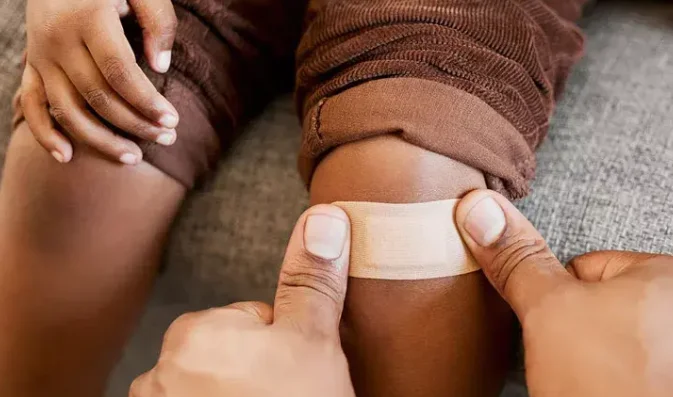Knowing how to handle a cut or laceration before professional medical help is available is an essential skill. Whether you’re dealing with a kitchen knife slip or a gardening mishap, quick and appropriate action can significantly affect the healing process.
1. Assessing the Wound
Identifying the Severity:
First, assess how deep and long the cut is. Superficial wounds typically require basic first aid, while deeper cuts, particularly those that don’t stop bleeding or that expose deeper layers like muscle or bone, demand immediate medical attention.
When to Seek Immediate Help:
Immediate medical intervention is crucial if the wound:
- Continuously bleeds despite applying pressure for 10-15 minutes.
- Is located in sensitive areas like the face or joints.
- Contains debris that cannot be removed easily at home.
- Exhibits signs of a severe infection or is caused by an animal bite.
2. Immediate Steps to Take
Cleaning the Wound:
Before addressing the wound, wash your hands with soap and water to avoid infection. Rinse the wound under clean running water to wash away dirt or small debris. Use soap around the wound but avoid getting soap in the wound as it may cause irritation.
Stopping the Bleeding:
Apply gentle but firm pressure using a clean cloth or sterile bandage. If possible, elevate the affected area above the heart to slow the bleeding. Maintaining pressure is key, and patience is required as the bleeding can take several minutes to stop for moderate to severe cuts.
3. Dressing the Wound
Choosing the Right Dressing:
Use a dressing that covers the entire wound without adhering to it. For most small to medium cuts, a sterile adhesive bandage is adequate. Larger or more severe wounds might require a sterile gauze pad secured with medical tape.
Applying a Bandage:
After the bleeding has ceased and the wound is clean, gently pat it dry. Apply an antibacterial ointment to decrease the risk of infection, then cover the area with a bandage. Ensure the bandage is firm enough to stay in place but not so tight that it impedes circulation, which is essential for healing.
4. Pain Management
Over-the-Counter Pain Relievers:
Acetaminophen or ibuprofen can help manage pain. Always adhere to the recommended dosages, and consider any personal or medical conditions that might affect your choice of pain reliever.
Home Remedies for Pain and Swelling:
An ice pack applied to the area for 20 minutes every few hours can reduce both pain and swelling. Ensure the ice is wrapped in a cloth to protect the skin from frostbite.
5. Monitoring and Care
Signs of Infection:
Regularly inspect the wound for signs of infection, which can include:
- Increased redness or swelling.
- The wound feels warm or painful.
- Pus or a foul odor emanates from the wound.
If you observe any of these symptoms, consult a healthcare professional without delay.
Changing the Dressing:
Replace the bandage daily or sooner if it gets dirty or wet. Clean the wound each time you change the dressing, applying fresh ointment and a new bandage to promote optimal healing.
6. When to See a Doctor
Seeking Professional Care:
Recognizing when a wound requires professional medical attention is crucial. Deep lacerations, cuts with jagged edges, or wounds that continue to bleed despite applying pressure for 10-15 minutes should be evaluated by a healthcare professional.
Additionally, any signs of infection such as increased pain, redness, swelling, or pus warrant a visit to a healthcare provider.
Knowing the appropriate care procedures, including when to seek help from an urgent care center, ensures the best possible outcome and minimizes the risk of complications.
Follow-up Care:
If stitches are required, proper follow-up care is essential to monitor the healing process and prevent infection. Make sure to adhere to all prescribed care routines and attend any recommended follow-up appointments.
Conclusion
Effective management of cuts before receiving professional care can prevent complications such as infections and excessive scarring. A well-stocked first aid kit and knowledge of first aid techniques are invaluable in managing unexpected injuries.
Moreover, being prepared with these tools and knowledge gives you the confidence to handle such situations calmly and efficiently.
Remember, timely and appropriate first aid can make a significant difference in the overall outcome of an injury. Always keep your first aid supplies updated and consider taking a certified first aid course to enhance your preparedness.

Ruby Stauffer is a prominent technology blogger known for her insightful analysis and in-depth reviews of the latest tech trends and gadgets. Her blog has become a go-to resource for tech enthusiasts seeking reliable information and expert opinions on the ever-evolving world of technology.

